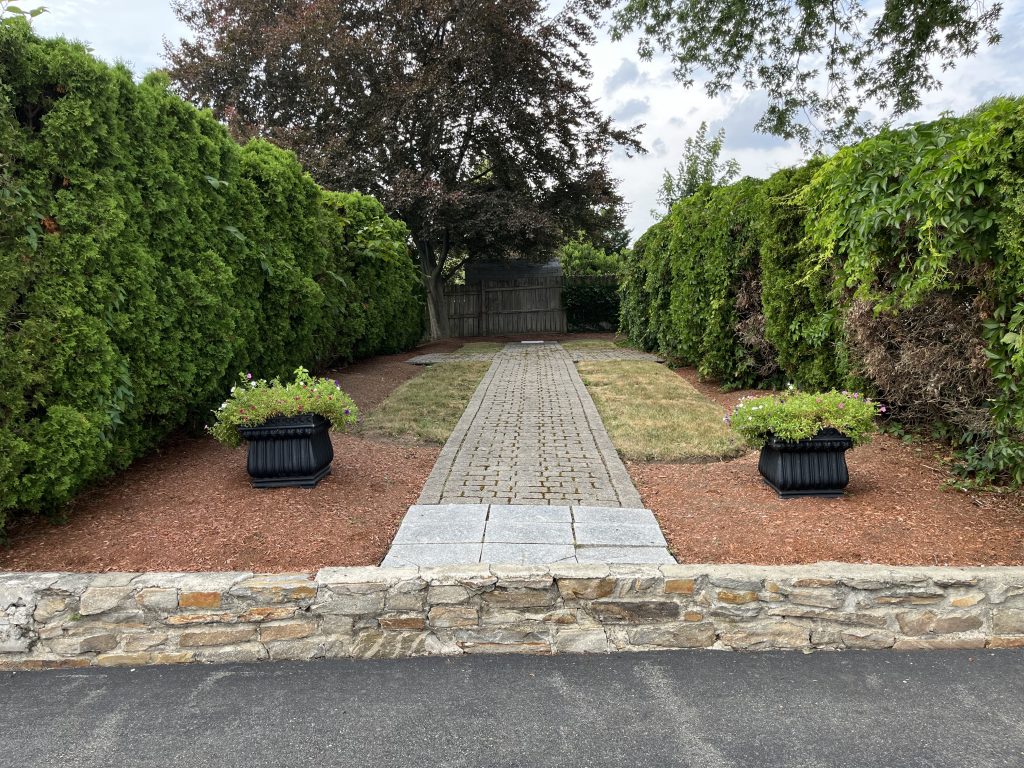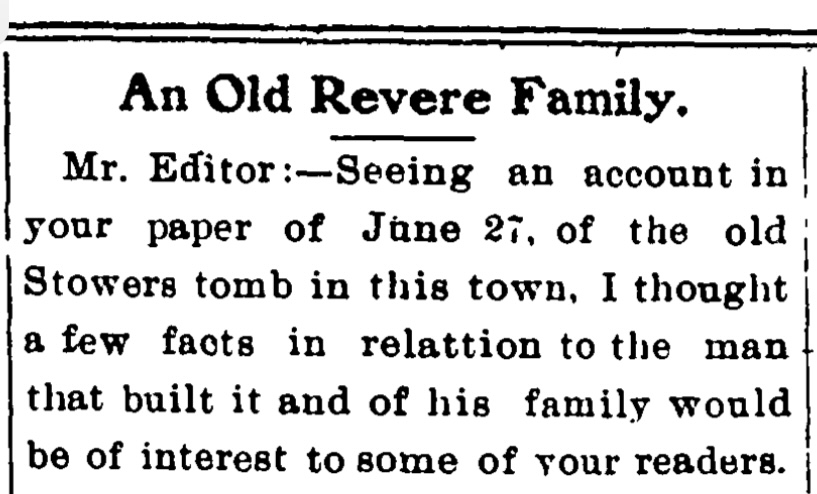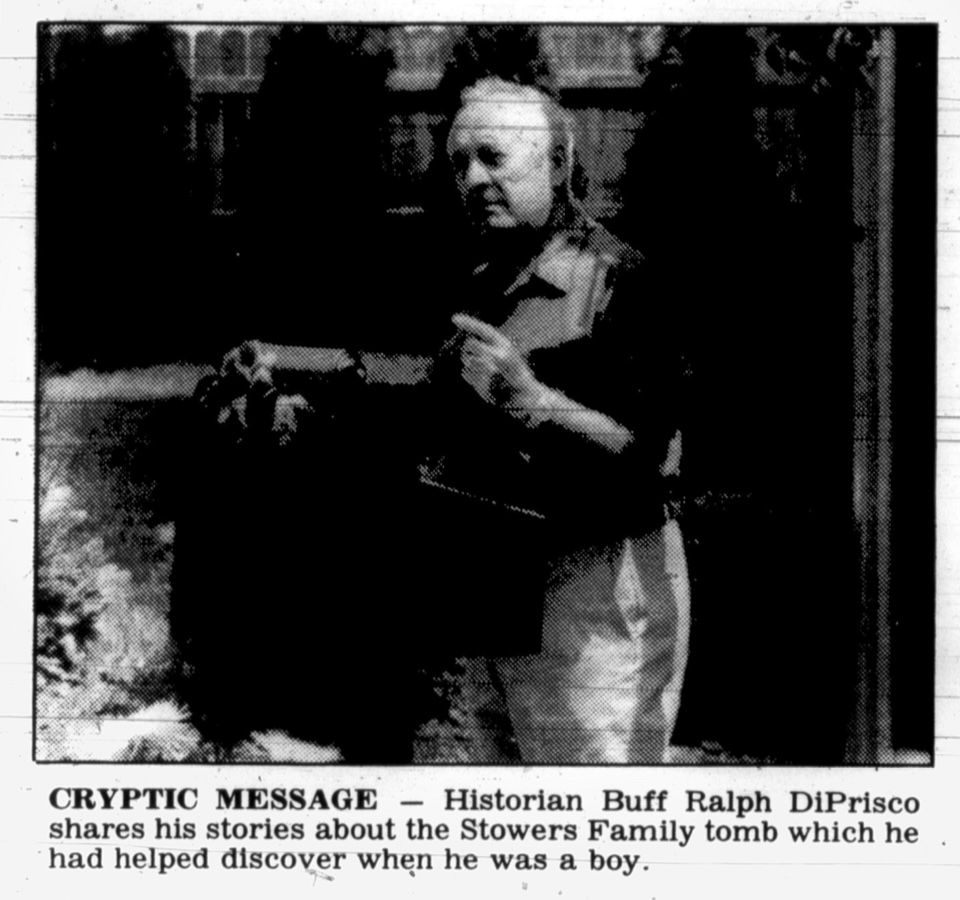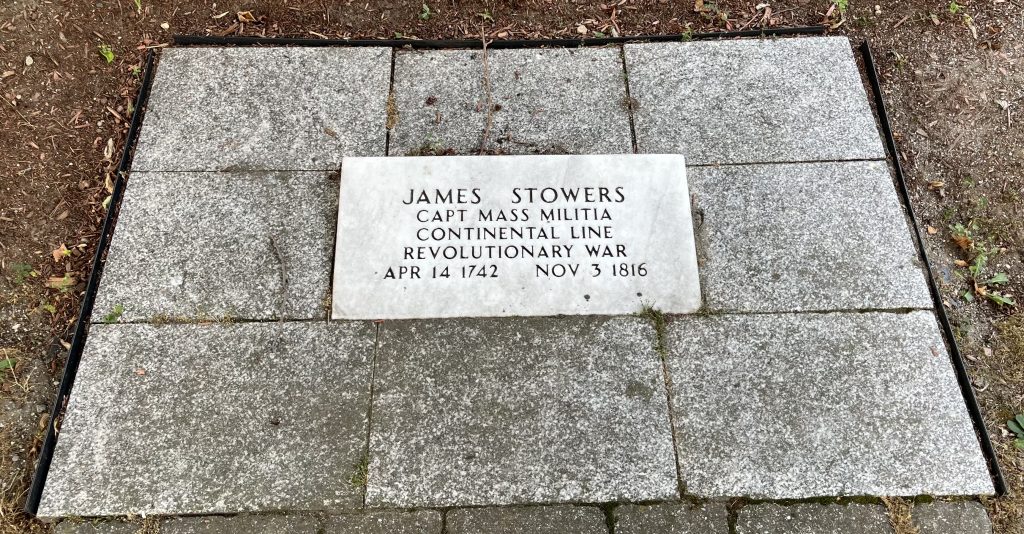RMBG has always been the only cemetery in Revere, but there is at least one other place of burial: the Stowers Family Tomb, which can be found behind the Vertuccio, Smith and Vazza funeral home on Beach Street. It was common in the 17th and 18th centuries for families to bury their loved ones in a plot on their farmland, which makes it likely that there were other individual family tombs throughout Revere, but the Stowers Tomb is the only one that has been located, verified and commemorated.

In 1903 Warren Fenno wrote a letter to the editor of the Revere Journal: “Seeing an account in your paper of June 27 of the old Stowers tomb in this town, I thought a few facts in relation to the man that built it and of his family would be of interest to some of your readers.” (Note – the only Stowers reference I could find in that paper was a notice for Joseph G. Stowers Real Estate, Notary Public, and Justice of the Peace.) In Fenno’s letter he describes how the Stowers family was among the earliest settlers of Charlestown before James Stowers moved to Revere (then Chelsea) around 1738. His son James was born in 1742, and it was he who had the tomb built in 1795.

The younger James Stowers was a member of local legend Captain Samuel Sprague’s militia company in 1775, the Suffolk County Regiment in 1777, and then a captain in the state militia. He was also a selectman and a representative to the General Court. Fenno writes that the Stowers house “stood down the lane from Beach Street where Winthrop Avenue Extension now runs.” The Stowers property totaled 105 acres, and according to Fenno included “all of the land in the center of the town bounded by what is now Pleasant Street, Broadway, School and Beach Streets,” as well as several other parcels. They continued to live in Revere throughout the 1800s, and more than 60 of them were buried in their tomb before the final interment in 1875. At the time of Fenno’s 1903 letter, the tomb stood behind the “John P. Pierce house on Beach Street.”
Over the next few decades the city covered up the entrance to the tomb and tried to keep it out of sight as much as possible. But one day a young history buff in-the-making named Ralph DiPrisco was playing with some friends when they noticed something in the brush. In DiPrisco’s own words (from the Revere Journal, 7/18/1990): “We went over and I saw a slate tablet with an old English inscription. We ignored it, but then another boy came back and said ‘We broke it, and it looks like a tomb.”
The young DiPrisco, much more conscientious than his friend, ran to get his father before exploring any further. The Journal reports that in DiPrisco’s recollection, “He and his father bent down into the five-foot high crypt and cautiously entered … DiPrisco saw the bodies of two youths, about five and ten years of age, wrapped in flannel, on tables supported by carpenters’ horses. The tomb, about 30 feet by 70 feet, had three compartments, with dozens of decaying pine boxes with individual iron handles. The arched tomb was lined with terra cotta bricks … The floor was of packed clay and gravel.” The young DiPrisco’s love for history had been ignited but the city did not share his enthusiasm. A few days later the DPW bricked up the entrance and it seemed that the Stowers Tomb was destined to fall into obscurity for good, but Ralph DiPrisco was not going to let it go.

In the 1980s the Vazza funeral home took over the property that included the Stowers Tomb. When paying his respects at a wake, DiPrisco told Louis Vazza about the tomb on his property. Vazza vowed to spruce up the landscaping and rededicate the tomb, and ceremonies were held in 1990 and again in 2006. Each event was attended by city officials, representatives from the National Guard, the VFW, and the Legion post, as well as Stowers descendants. A new marker bore the original inscription from 1795:
“Tis death that ends this mortal state / We must obey the call / The tomb stands gaping for the great / And ready for the small.”
As of this writing, that stone is not present at the tomb. The tomb is currently marked by a white marble veteran’s marker for James Stowers with no mention of the other 60 or so people interred there.

It is possible to visit the Stowers Tomb, but one should naturally avoid visiting when there is a service in progress at the funeral home. As for other potential family tomb locations in Revere, we don’t have any leads at this time. But if you’re mowing your lawn and hit a mysterious piece of slate, by all means let us know!
- Brendan O’Brien, RMBGRC President, August 2024
